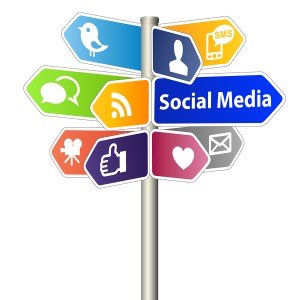Respectful Social Media Protocols or Else?
 There are so many reasons that organizations everywhere need to think very carefully about how they develop, roll-out, and then manage their Social Media protocol and policies. Social Media is growing so rapidly and becoming a massively powerful and important part of our world, but there are still companies out there who do not have a firm grasp on this reality.
There are so many reasons that organizations everywhere need to think very carefully about how they develop, roll-out, and then manage their Social Media protocol and policies. Social Media is growing so rapidly and becoming a massively powerful and important part of our world, but there are still companies out there who do not have a firm grasp on this reality.
In my last blog, I provided you with the amazing statistics regarding how many people use Social Media to communicate. The numbers are simply staggering!
But does every employee understand the importance of their responsibility when using Social Media, and the correlation that it can have within their workplace?
What training does an organization provide to their employees with respect to their Social Media policy?
Let me give you some examples from the world of business, where organizations have been found wanting, when it comes to their use of Social Media, and the connection with respectful conduct. Perhaps by looking at the nightmares others have endured, it will encourage you to make sure that your own house is in order.
Just having a policy in place is never going to be enough.
As an example, this is a case involving Passport Canada (Labranch vs Treasury Board: Federal Arbitration Decision 2011) where the arbitrator stated that
…The employer cannot simply invoke a zero-tolerance policy for workplace discrimination and hope for a discrimination-free work environment, yet do nothing to achieve it.
Three stories from the world of business and social media:
- One of the most memorable examples of the power of social media was Dave Carrol’s experience with United Airlines, and the story behind his missing guitar. Read about it here
Lesson: Social Media is VERY powerful!
- Another example comes from Honda, when the company was inviting comments regarding their new Crossover vehicle. Although many blog postings were critical of the new vehicle, one in particular was highly enthusiastic about it. It turned out that the “blogger” was not only an employee of Honda, but turned out to be a manager in Honda Product Planning.
Lesson: Be transparent when using social media as an employee.
- The last example is from Domino’s Pizza when bored employees not only decided to film themselves performing rather unsanitary acts with sandwiches, but then also decided to share it with the world on You Tube. The video has been removed from this link.
Lesson: Your employees represent your brand…so ensure they have been trained on how to use (and not use) social media.
In my opinion, it comes down to having a well-written, thorough, and relevant Social Media policy, and then embarking on an employee training program that provides guidance to everyone in your organization of why it’s so important to be alive to strengths and weaknesses of social media use. Just having a line in a policy document that states: Employees are expected to use good judgement and common sense when participating in Social Media, for either official or personal use….is simply not enough!






Leave A Comment